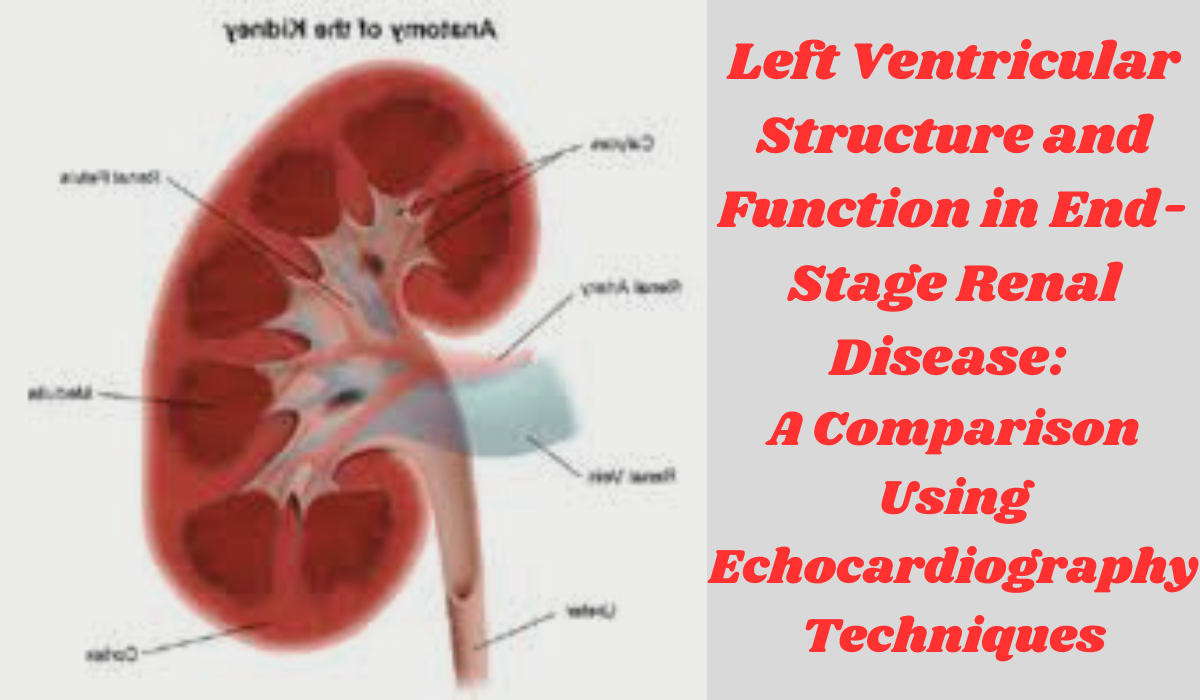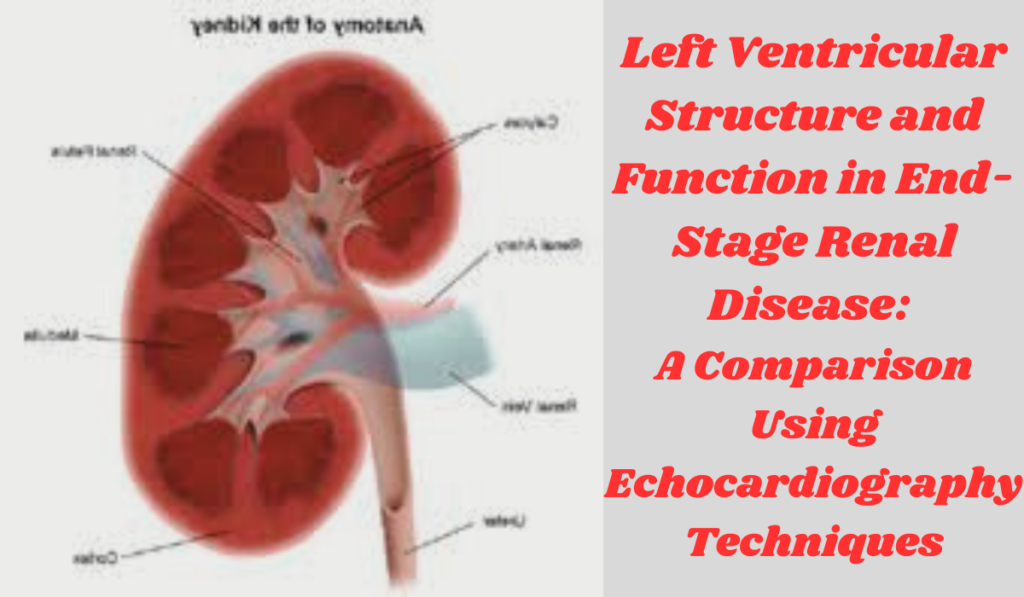Left Ventricular Structure and Function in End-Stage Renal Disease: A Comparison Using Echocardiography Techniques-2024!

Introduction:
End-stage renal disease (ESRD) is a serious condition with various complications affecting the heart, including changes in the left ventricular structure and function. Echocardiography techniques play a crucial role in assessing these changes and monitoring the cardiovascular health of ESRD patients. In this essay, we will compare the findings of conventional echocardiography and 2D speckle tracking echocardiography in evaluating the left ventricular structure and function in ESRD patients.

Left Ventricular Structure and Function in End-Stage Renal Disease: A Comparison Using Echocardiography Techniques-2024!
Conventional Echocardiography:
Conventional echocardiography is a widely used imaging technique that provides information about the overall structure and function of the heart. It uses ultrasound waves to create real-time images of the heart and its chambers, including the left ventricle. Conventional echocardiography measures parameters such as left ventricular ejection fraction, left ventricular mass, and wall thickness to assess the structural and functional changes in the heart of ESRD patients.
2D Speckle Tracking Echocardiography:
2D speckle tracking echocardiography is a more advanced imaging technique that allows for a detailed assessment of myocardial deformation and function. It provides information about the strain and strain rate of the myocardium, which can detect subtle changes in cardiac function that may not be apparent with conventional echocardiography. 2D speckle tracking echocardiography is particularly useful in assessing myocardial function in ESRD patients, who are at higher risk of cardiovascular complications.
Comparison of Findings:
Several studies have compared the findings of conventional echocardiography and 2D speckle-tracking echocardiography in ESRD patients. These studies have shown that 2D speckle tracking echocardiography is more sensitive in detecting early changes in left ventricular function, such as subclinical myocardial dysfunction, in ESRD patients. It can provide valuable information about the risk of cardiovascular events and help in early intervention to prevent further cardiac damage.
Conclusion
In conclusion, both conventional echocardiography and 2D speckle tracking echocardiography are important tools in assessing the left ventricular structure and function in ESRD patients. While conventional echocardiography provides valuable information about the overall cardiac structure, 2D speckle-tracking echocardiography offers a more detailed assessment of myocardial function and can detect subtle changes in cardiac function early on. By combining these imaging techniques, clinicians can better monitor the cardiovascular health of ESRD patients and provide timely interventions to prevent cardiovascular complications.



One thought on “Left Ventricular Structure and Function in End-Stage Renal Disease: A Comparison Using Echocardiography Techniques-2024!”